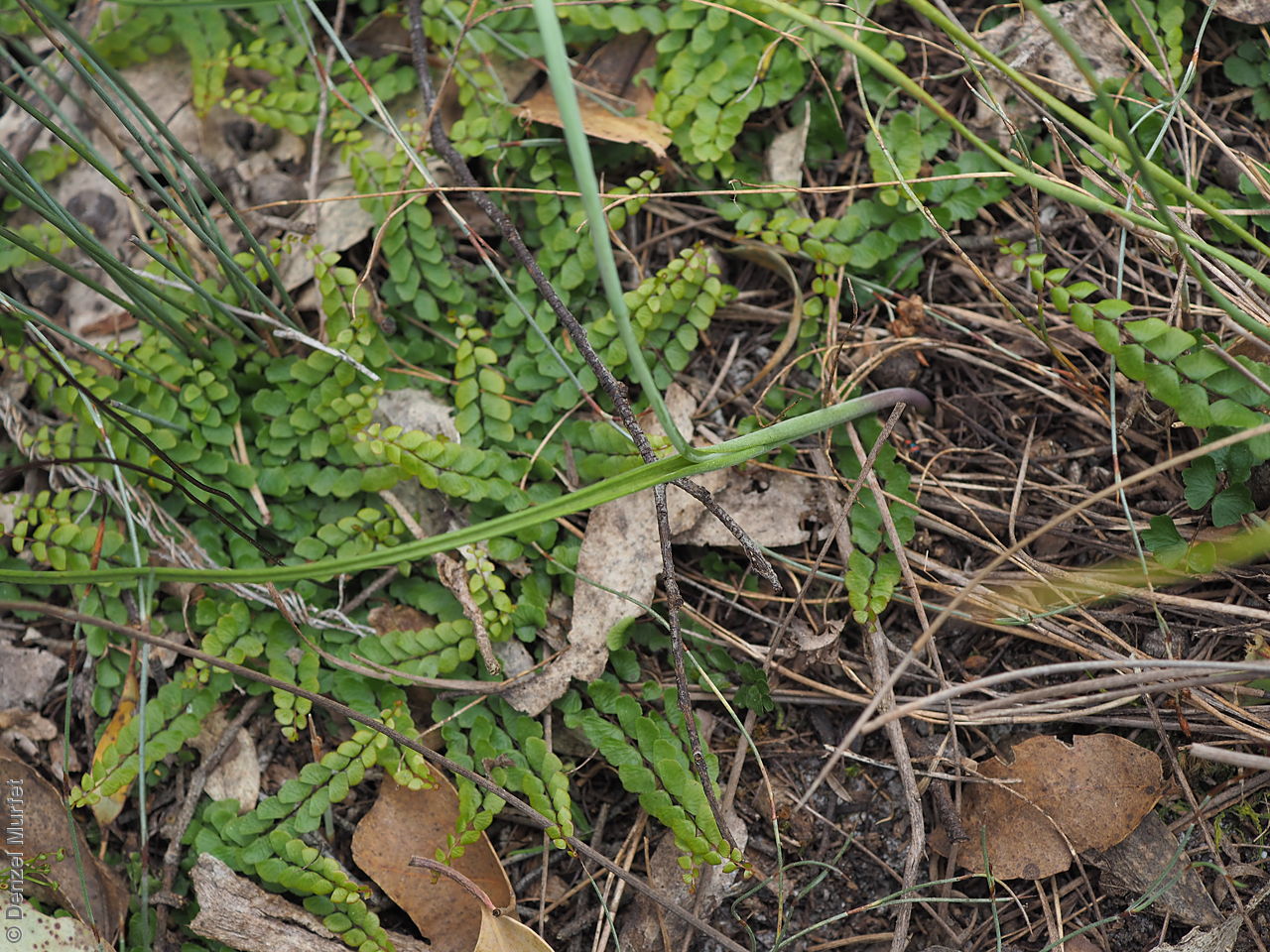
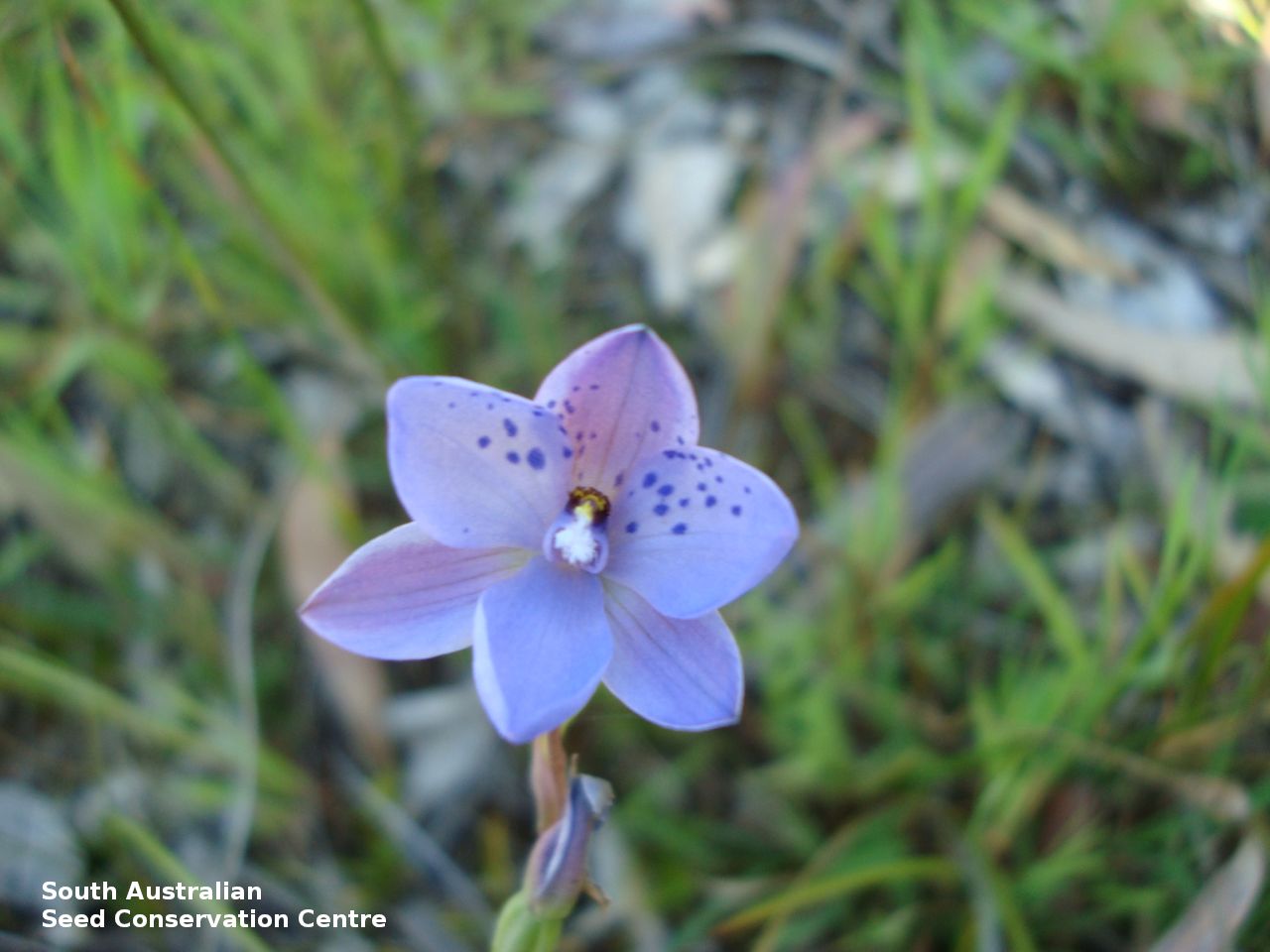
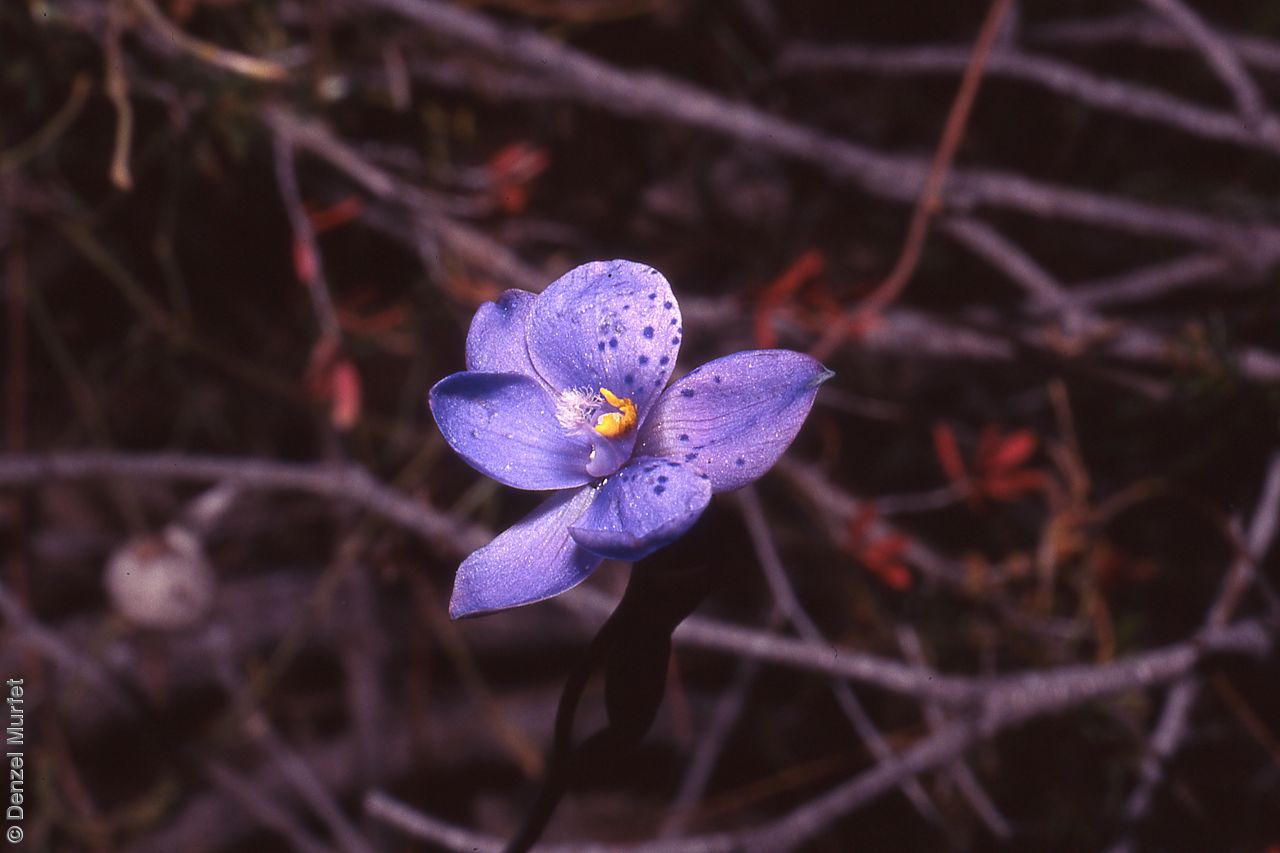
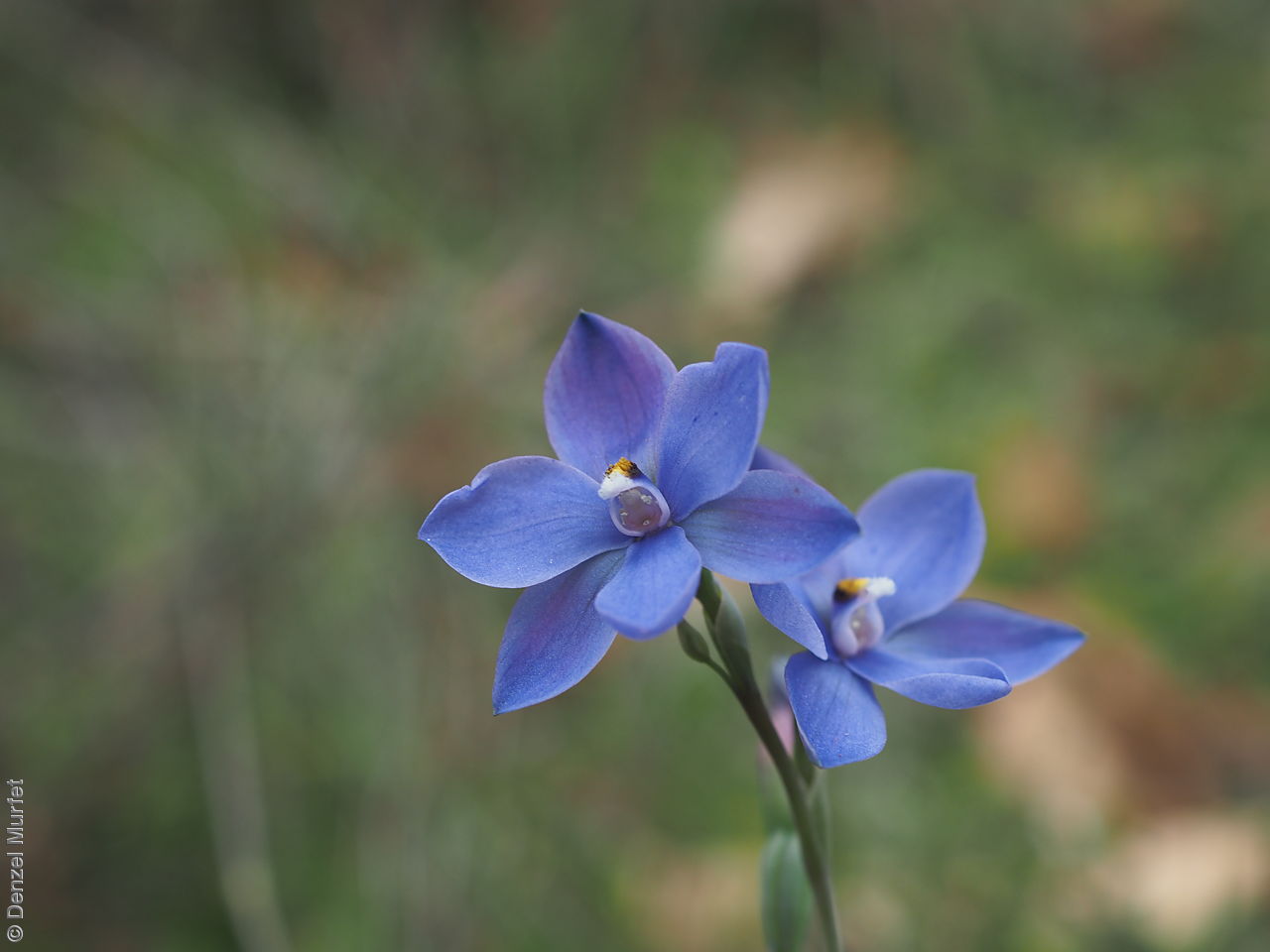
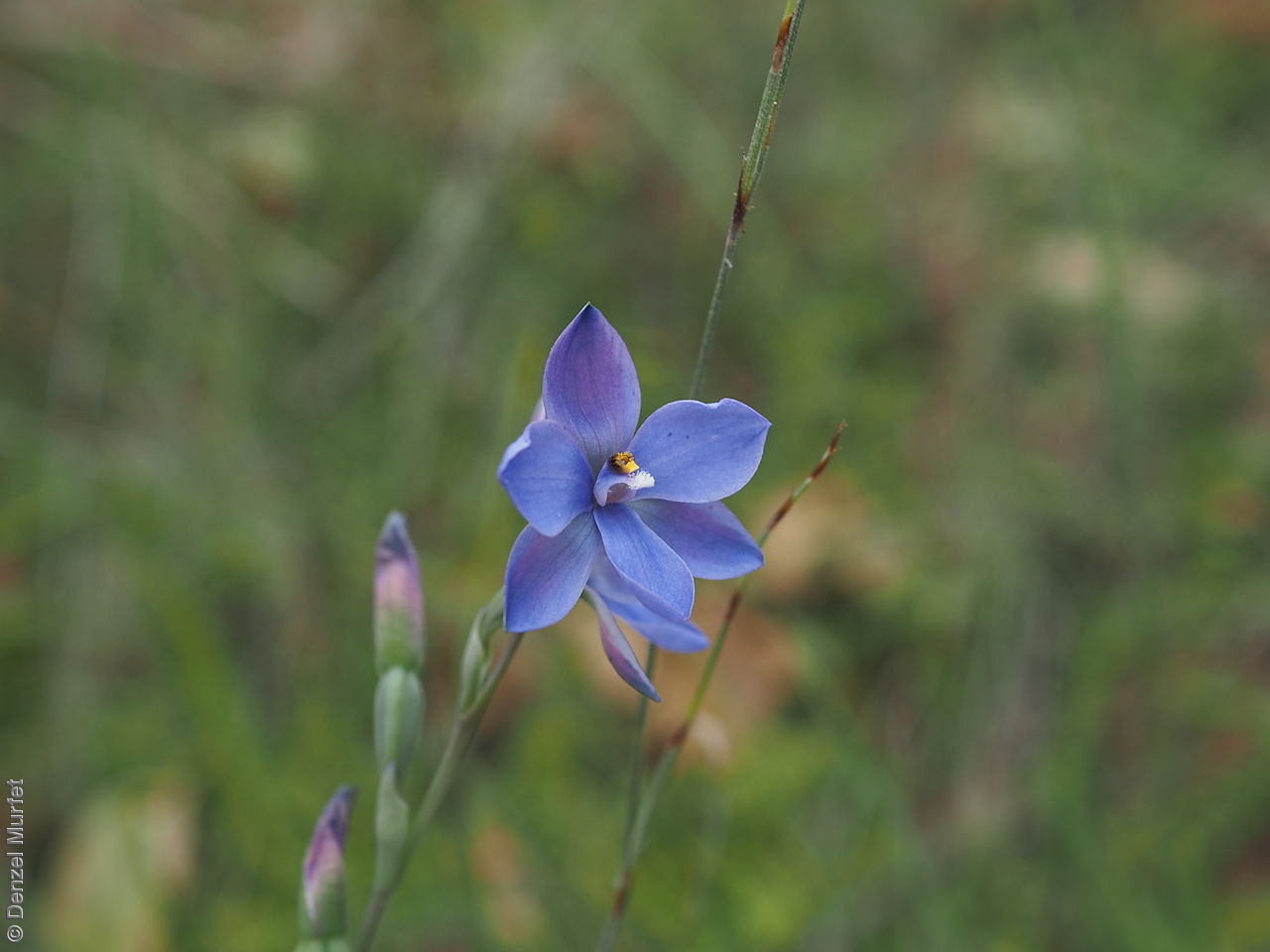
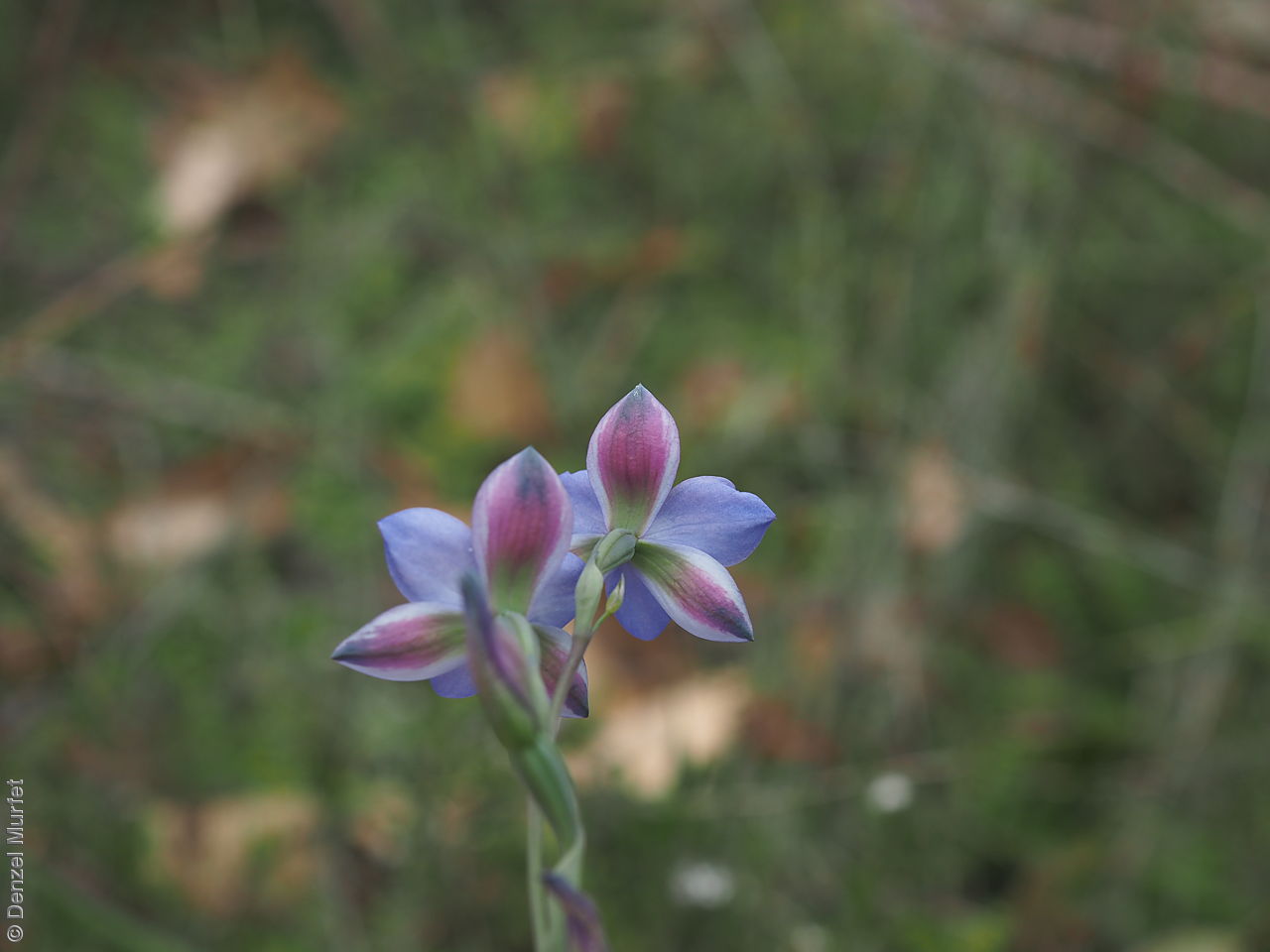
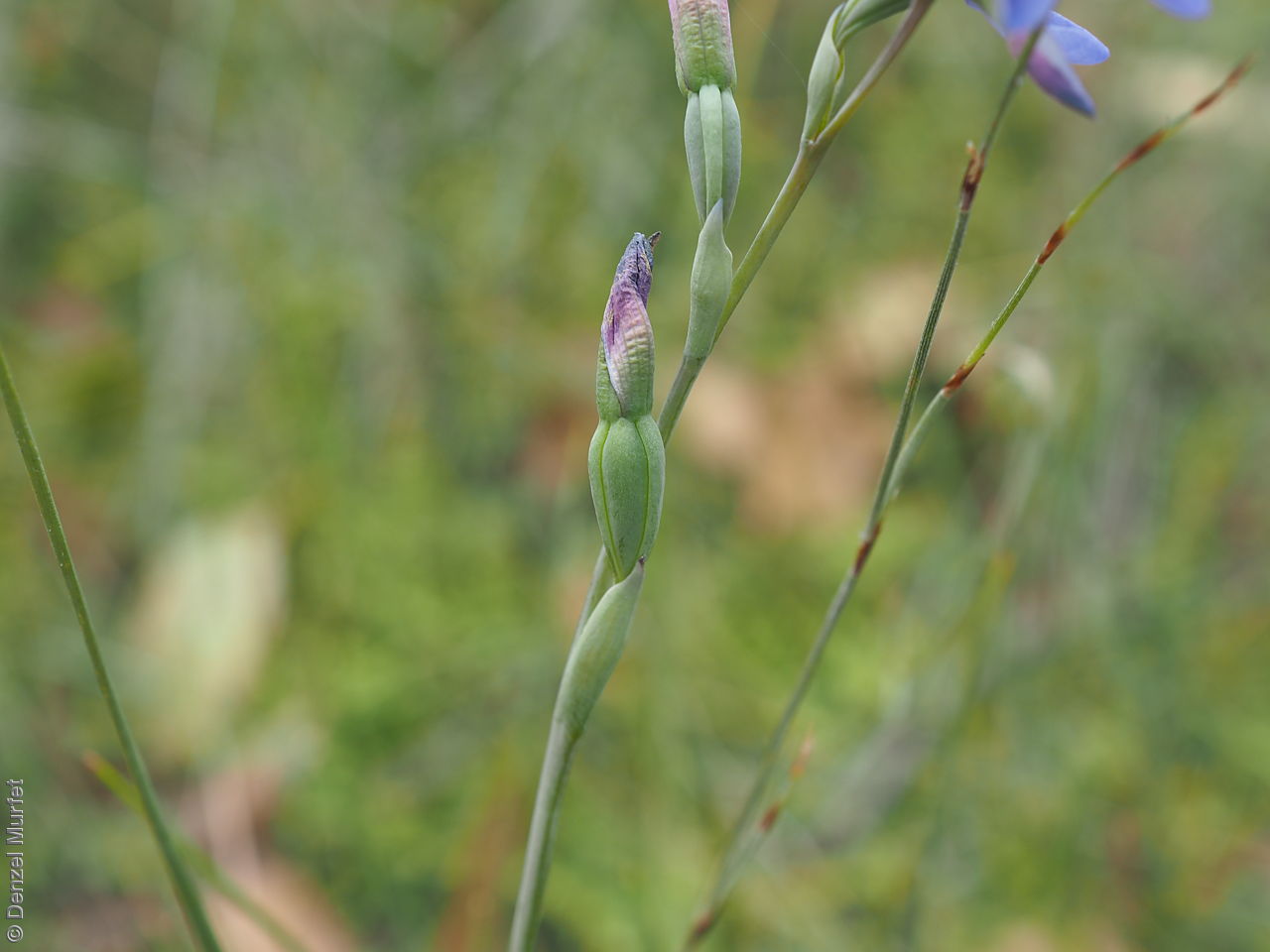
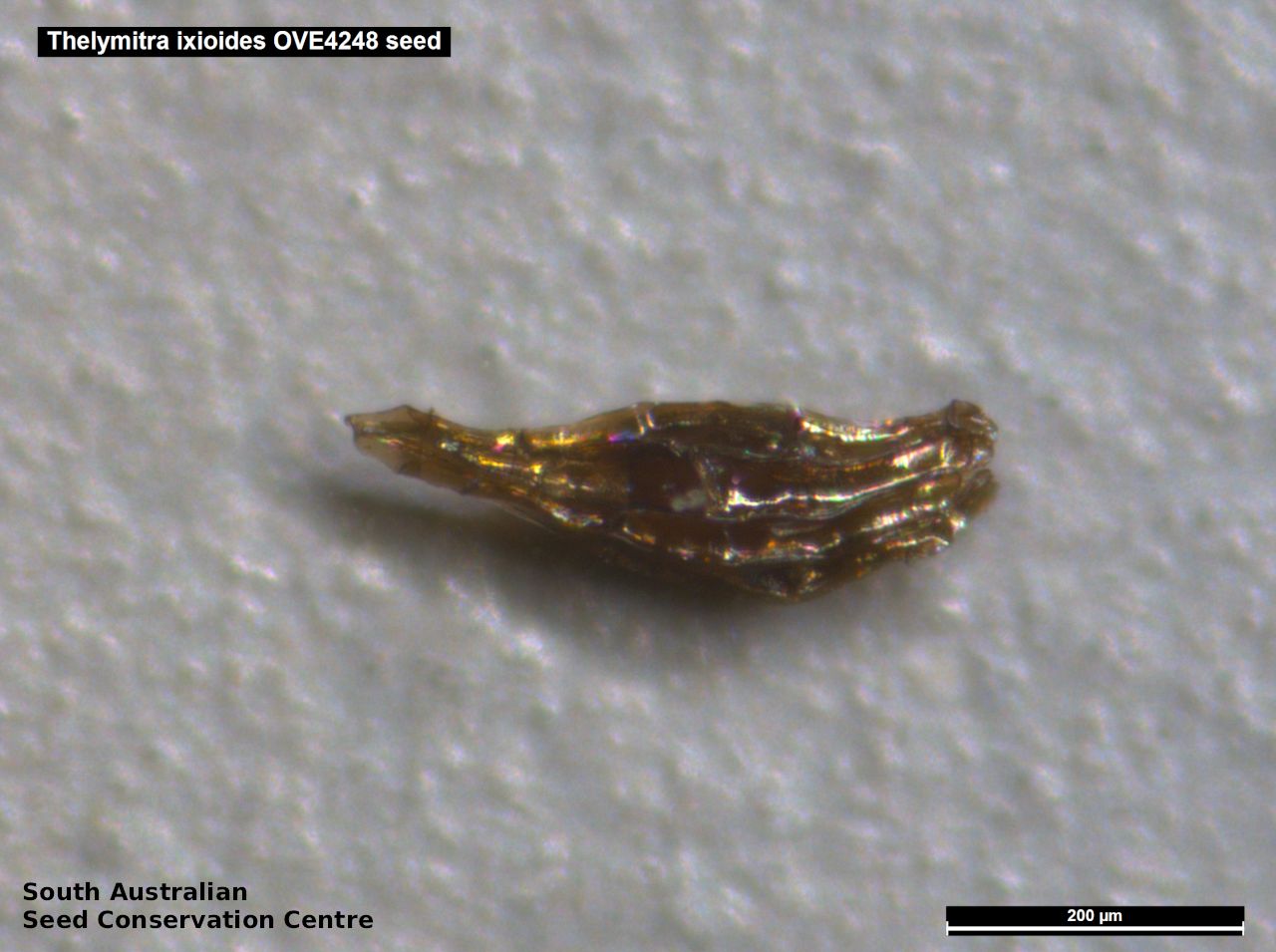
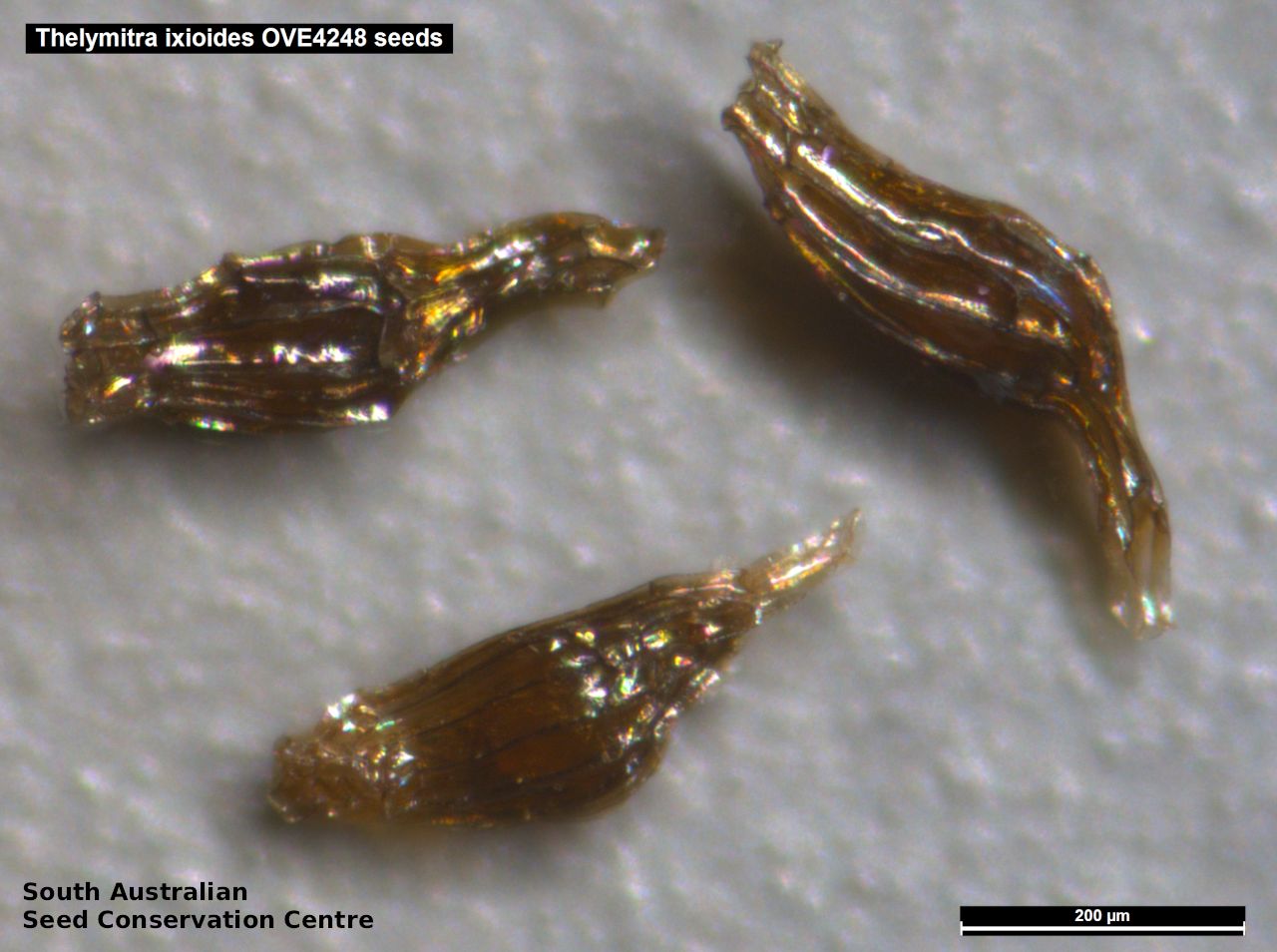


Botanical art
Prior names
Thelymitra ixioides var. subdifformis
Thelymitra lilacina
Common names
Dotted Sun-orchid
Spotted Sun-orchid
Etymology
Thelymitra from Greek 'thelys' meaning a bishop and 'mitra' meaning a headwear, hat, hence a bishop�s mitre; referring to the sometimes plumed or decorated wings of the column, which is usually produced behind and over the anther in a hood-like projection. Ixioides means like an Ixia; referring to dark blue dots or spots on the floral segments found on most specimens of this species.
Distribution and status
Found in the southern Mount Lofty Ranges and the lower South-east in South Australia, growing in woodland or swampy ground. Also found in Queensland, New South Wales, Victoria and Tasmania. Native. Rare in South Australia. Rare in Queensland. Common in the other states.
Herbarium regions: Murray, Southern Lofty, South Eastern
NRM regions: Adelaide and Mount Lofty Ranges, South Australian Murray-Darling Basin, South East
AVH map: SA distribution map (external link)
Plant description
Tall and robust herb to 30 cm high with the leaf base striated purple and the leaf thick textured, not flat. Flowers on very slender pedicels, about 2-6, blue on the inside with a spotted dorsal sepal and petals; the sepals reddish-purple on the outside, purple and mauve swollen buds and cupped flowers with the column apex sporting a dense crest of yellow papillae. Flowering between October and November. Fruits are brown papery ellipsoid capsule.
Seed collection and propagation
Collect seeds between January and February. Collect fat capsules as they start to dry and turn brown. Pods will split and release the seeds quickly and will require monitoring. To increase the chances of collecting mature pods, it is recommended that a small breathable bag (ie. Organza bags) be used to enclose the developing capsules. Place the capsules in a container that will hold fine seeds and leave to dry for a few weeks or until the capsule split. Then carefully hold the capsule and tap it gently to release the seeds. Store the seeds with a desiccant such as dried silica beads or dry rice, in an air tight container in a cool and dry place or in liquid nitrogen.
| Location | No. of seeds (weight grams) | Number of plants | Date collected | Collection number Collection location | Date stored | % Viability | Storage temperature |
|---|---|---|---|---|---|---|---|
| BGA | 48,000 (0.038 g) | 3-Jan-2017 | OVE4248 Kangaroo Island | 1-Nov-2017 | N/C | -80°C |
Number of plants: This is the number of plants from which the seeds were collected.
Collection location: The Herbarium of South Australia's region name.
% Viability: Percentage of filled healthy seeds determined by a cut test or x-ray.